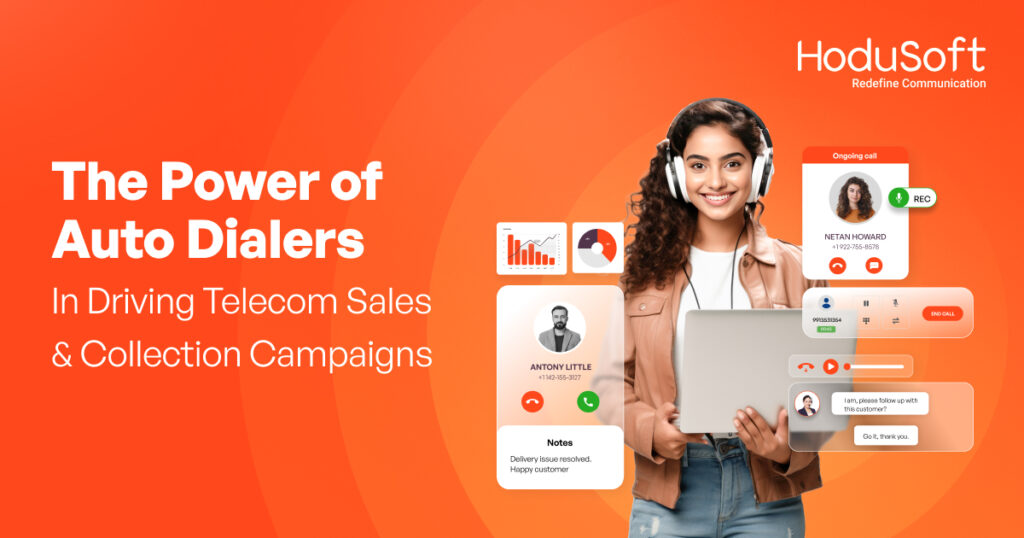Omnichannel Contact Center: A Beginner’s Guide to Scale Up
Providing the best customer service is one of the most important pillars of any businesses’ success. Earlier, call centers had limited resources making it difficult for tech support to handle every query. Today the concept of the omnichannel contact center has transformed the scenario. It enables businesses to provide premium customer service through the channel of customer choice. A software contact center with an omnichannel communication feature also provides a unified view of the customer journey through different channels that facilitate complete monitoring. It has never been easier or more imperative to communicate digitally with your customers.
Customer service is still mainly carried out through phone and email at many contact centers. Although these channels remain important, an omnichannel contact center enables businesses to provide customers with the best support digitally. If you have been thinking about investing in a virtual contact center software that allows omnichannel communication, here is what you must know.
An overview of Multichannel Contact Centers
Multichannel contact centers allow agents to interact with customers over several channels, but each works separately. A multichannel center approach to customer experience management (CXM) includes voice, email, web page forms, fax, chat, and text message interactions. It is a forerunner to the omnichannel approach.
Voice and non-voice communication systems were separately administered and hosted in the early days of the internet. In the early 1990s, call centers faced the challenge of integrating voice with non-voice channels, while still maximizing their investment in voice-based solutions, including expensive interactive voice response (IRV) systems. Due to limited integration on the back-end, customers who moved from one channel to another were required to share the same information multiple times. This was the only drawback of multichannel contact centers.
What Is An Omnichannel Contact Center?
Omnichannel contact centers streamline business communication. They update all customer service and communication channels simultaneously with customer history from all the channels. As a result, representatives can easily review the customer’s entire conversation history before they assist them. Moreover, customers can select their preferred mode of communication, leading to a higher level of customer satisfaction.
Among the preferred channels for omnichannel cloud contact centers are:
- Online conferencing
- Live website chat
- Telephony via VoIP
- Text messaging (SMS)
- Using social media (Facebook, Instagram, Twitter, etc.)
- Faxing over the Internet
- Sending an email
Which support channels should I integrate?
What is the best way to find out which support channels your customers prefer? You can only know the answer when you ask your customers.
Find out how customers prefer to reach you by conducting customer interviews or sending out a survey. Make sure their responses match reality by comparing their answers. If your call volume is consistently high, adding alternative channels is a no-brainer. Provide another communication channel to relieve the pressure on call queues.
A customer does not always need to talk to an advisor when he or she needs help troubleshooting their cell phone. You can automate the processes. You can incorporate route web chat inquiries to members of your call center or to specialists in that field. They can even serve three, four, or even five customers simultaneously!
This meets customer needs and reduces call volumes at the same time.
Multichannel Contact Center vs Omnichannel Contact Center
Multichannel contact centers may begin customer interactions via email. Emails may contain information such as order and tracking numbers, the best time to contact the customer, and additional contact information. Agents read the email and begin to work on resolving the issue. After writing the initial email, the customer calls customer service, reaching a different agent than the one who read the email. As the platform is multichannel and not omnichannel, it comes with a few challenges. The new agent does not have access to or knowledge of any prior interactions.
Therefore, the customer has to tell the same story to multiple agents, and the agents waste time dealing with problems that someone else may have already solved. Most consumers find themselves repeating the issue and get frustrated through their entire customer experience. Therefore, poor communication directly contributes to a poor buying experience. Poor communication also hurts team productivity.
In an Omnichannel approach of virtual contact center software, customer data is synced across all channels in real-time, regardless of the channel or agent working with the customer.
Consider the case where a customer asks a question about a product using the live web chat tool on your website. To see the product in action and to speak face-to-face with a specialist, the customer schedules an online video conference. A second product specialist will have access to the earlier website chat transcript if they take the call. They will therefore be fully prepared for the video call – and the first specialist the customer connects within website chat will also be able to track their journey and touch points along the way.
Through call center software with omnichannel communication, the buying process and resolution rates are sped up while customer support headaches are eliminated from each side.
Read Also:ABC of Virtual Call Center Software and Contact Center
Why does your company need an Omnichannel Contact Center?
Here are a few reasons how omnichannel contact centers can benefit your business:
-
You can learn more about your customers
Omni Channels such as chat, social media, forums, and even webinars leave a written customer trail. Accumulating customer information in its context can give you more insight into how customers interact with your brand and how their needs vary across channels, depending on what you do with it.
It allows you to better cater to your clients by tweaking and improving your customer service.
-
Translations are clear
The powerful integration ensures that nothing gets lost and consumers can continue where they left off. A brand that saves the customer’s time is also conveying the feeling that every interaction matters. Every customer’s problems and queries are acknowledged and stored for future reference with omnichannel contact centers.
-
Increasing agent productivity
The agent can only serve one customer at a time via phone. There are other channels such as chat, social media where he can serve hundreds or even thousands of customers at the same time. Thus, agents can focus on more complex issues, adding real value to the call center.
-
It’s more convenient
Brand success depends on customers’ trust. You know that you need to wow customers as soon as they choose your brand. From the systems and technology, everything must be of the highest level. Beyond offering your customers all of the above, an omnichannel contact center helps your employees become more efficient, effective, and engaged. It’s almost like preparing for an exam. You feel confident and know that you will succeed. That’s exactly what you want from your employees. Having the right tools to deliver information about the customer, whether online or offline. It is a seamless way that makes the process enjoyable for everyone involved.
The right approach will improve customer journeys and elevate customer experiences. Omnichannel is not an oversold concept. Since people spend less than 15 seconds on a website these days, it’s essential to know how to interact quickly and efficiently. Brands need to incorporate an omnichannel contact center to make customer satisfaction their daily mission.
Choosing the best contact center software from the multiple options available in the market can be perplexing. HoduCC is an ideal pick that serves as versatile FreeSwitch contact center software that takes care of your customers on and offline with personalized, on-demand service. It is available in two versions: multi-tenant and single-tenant contact centers to meet the needs of small, medium, and large enterprises.



